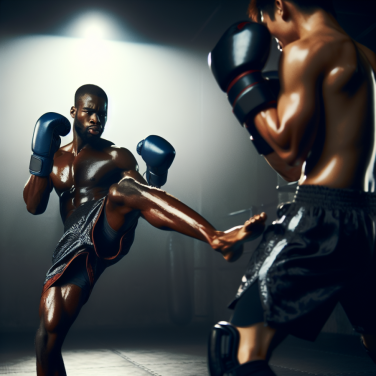Understanding the Basics of Diverse Sports Equipment
If you’re a sporting enthusiast - or simply a novice looking to break into a new athletic hobby - then one of the most crucial components you’ll need to consider is sporting equipment. From basketballs to racing bikes, sports equipment can vary dramatically depending on your chosen sport. Here’s a comprehensive guide that will help you understand the basics of diverse sports equipment.
Firstly, let's visit the world of Team Sports. In most cases, the required equipment is straightforward. For example, soccer necessitates a soccer ball and shin guards, while basketball requires a basketball and suitable footwear. Still, some sports get slightly more complex. American football requires helmets, padding, and the notorious pigskin ball. Baseball needs bats, gloves, helmets, and a baseball. It’s crucial to prioritize safety and ensure you’re appropriately fitted for your equipment, particularly in sports that involve a higher risk of physical contact or injury.
Next, we venture into the realm of Individual Sports. Individual sports can often require highly specialized equipment. For tennis, rackets and tennis balls are novice essentials, but advanced players may want to invest in high-quality shoes, custom rackets, and even personalized grip tape. Golf, on the other hand, requires a set of clubs, balls, and tees, as well as appropriate attire for the golf course. Swimming requires a quality swimming suit, swim cap, and goggles. It’s vital to carefully consider your equipment's quality, as poor-quality equipment can significantly impair performance.
We mustn't overlook the equipment required for Winter Sports. For sports like skiing and snowboarding, the need for quality equipment is crucial for both performance and safety. This includes skis or snowboards, boots, helmets, poles, and goggles. Even the clothing you wear, from the thermal layers to the outer waterproofing, is considered essential equipment for these sports.
Then, there are the Fitness and Gym Activities. Conventional gym workouts require clothing that is comfortable and suitable for a wide range of movements. Additional equipment can include water bottles, yoga mats, hand weights, resistance bands, or even more complex equipment like cardio machines or weight benches. Remember that while gym workouts are typically lower-risk than other sports, poor form or improper use of equipment can still lead to injury, so ensure you’re well informed on how to use your equipment correctly.
Lastly, we delve into the realm of Extreme Sports, like downhill mountain biking, rock climbing, or even skydiving.
Read also:
Understanding the Nuances of Golf Disc Selection: Who Uses What and Why?
Tips and Tricks for Choosing the Right Sporting Equipment
Choosing the correct sporting equipment can significantly impact your performance, health, and safety. However, with endless options on the market, choosing the right gear can be quite challenging. These following tips and tricks can help you navigate through the world of sporting equipment more efficiently.
One important aspect to remember when choosing the right sporting equipment is to identify your sporting needs. Different types of sports require specialized equipment. For instance, investing in high-quality durability-based equipment is a smart move for outdoor contact sports like soccer, rugby, or football. Meanwhile, speed-based sports would require lightweight and aerodynamic equipment.
Having a clear idea of your budget is also crucial. It can be easy to get carried away and buy the most expensive gear on the market. While pricier items are often associated with higher quality, this is not always the case. Sometimes, you're just paying for the brand name. Do your research to strike a balance between quality and affordability.
Size and fitting of the equipment should be given due attention. Ill-fitted sports gear can negatively affect your performance and potentially lead to injuries. For instance, choosing the wrong shoe size can cause blisters, while using a wrong-sized helmet can increase the risk of head injuries. Always prioritize comfort and functionality over aesthetics when choosing sporting equipment.
While the look and feel of a product are vital, knowing the material of the equipment is equally important. Different materials provide different levels of durability, performance, and comfort. For instance, sports shoes are designed with materials like rubber, synthetic, mesh, and others that offer various levels of breathability, durability, and flexibility.
Understanding the safety ratings and certifications of the sports equipment is also crucial. This is especially true for protective gears like helmets, mouthguards, pads, and gloves. Make sure these equipments adhere to safety standards and carry certifications from recognized bodies.
Checking the product reviews before making a purchase can go a long way. Reviews by other customers would often highlight any concerns or advantages about the sporting equipment that are not explicitly stated by the manufacturer.
It's important to consider the maintenance and care required for the equipment. Some material types may need special care or frequent replacement, adding to their overall cost. Consider how much time and effort you're willing to invest to maintain your gear before making a purchase.
Lastly, stick with reputable brands or retailers. While it's not bad to try out new releases from emerging brands, it's generally safer to go with long-standing brands with a good track record.




